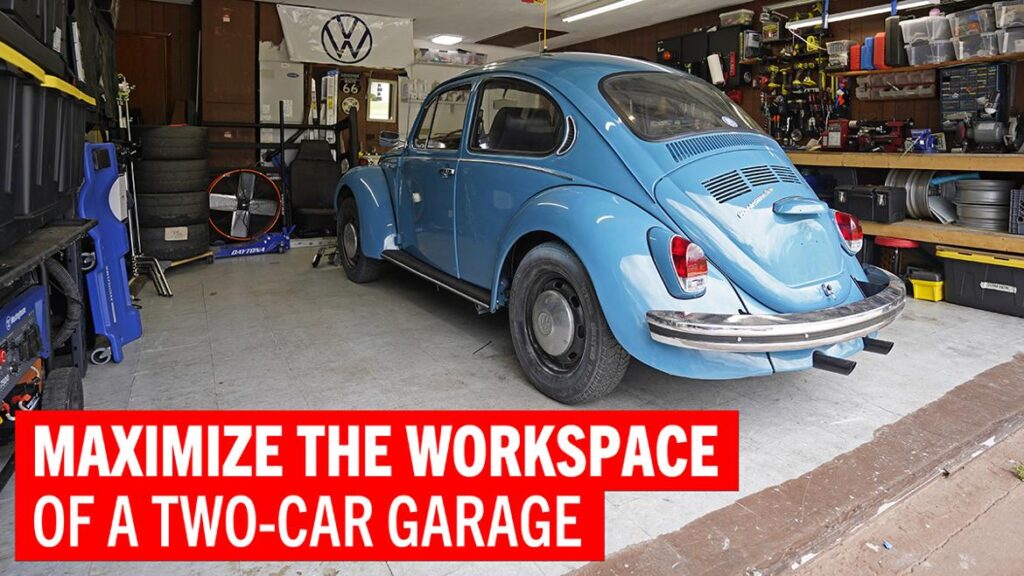Thank you for reading this post, don't forget to subscribe!
I don’t.
So, how did I make the most of my seemingly humble two-car garage without sacrificing its everyday functionality? Here are a few ideas I found that helped strike a balance between …
Storage
This might be the most important step in making your garage as usable as possible. Shelving is a great place to start, and I’ve been using these from Lowe’s for years. They’re sturdy, easy to assemble, and adjustable to accommodate various bin sizes (within reason).
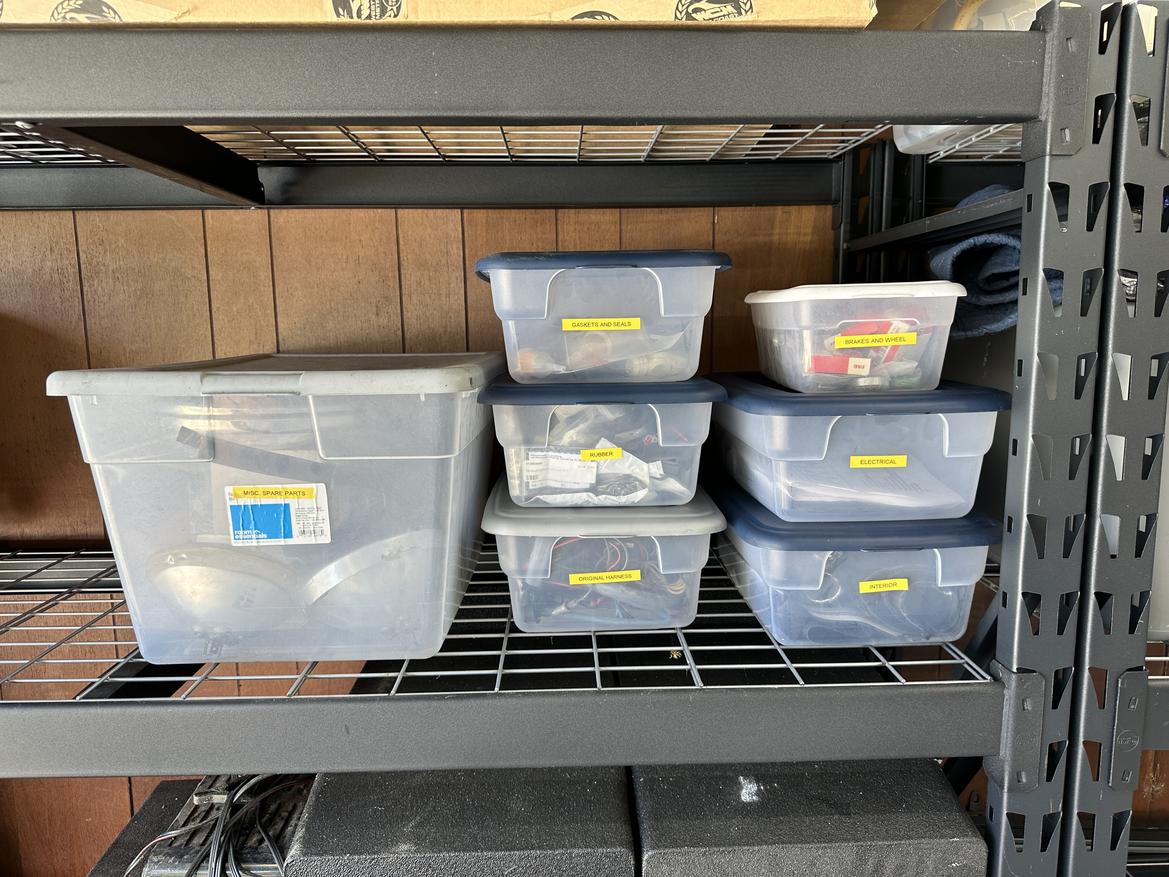
Speaking of bins, I like using identical ones for a uniform look and easier reorganization. Clear bins are especially helpful for items that get frequent use. Things like tape, glue, clamps, PPE and other small essentials go into smaller, clear bins within easy reach. That way, you can quickly find and put away what you need.
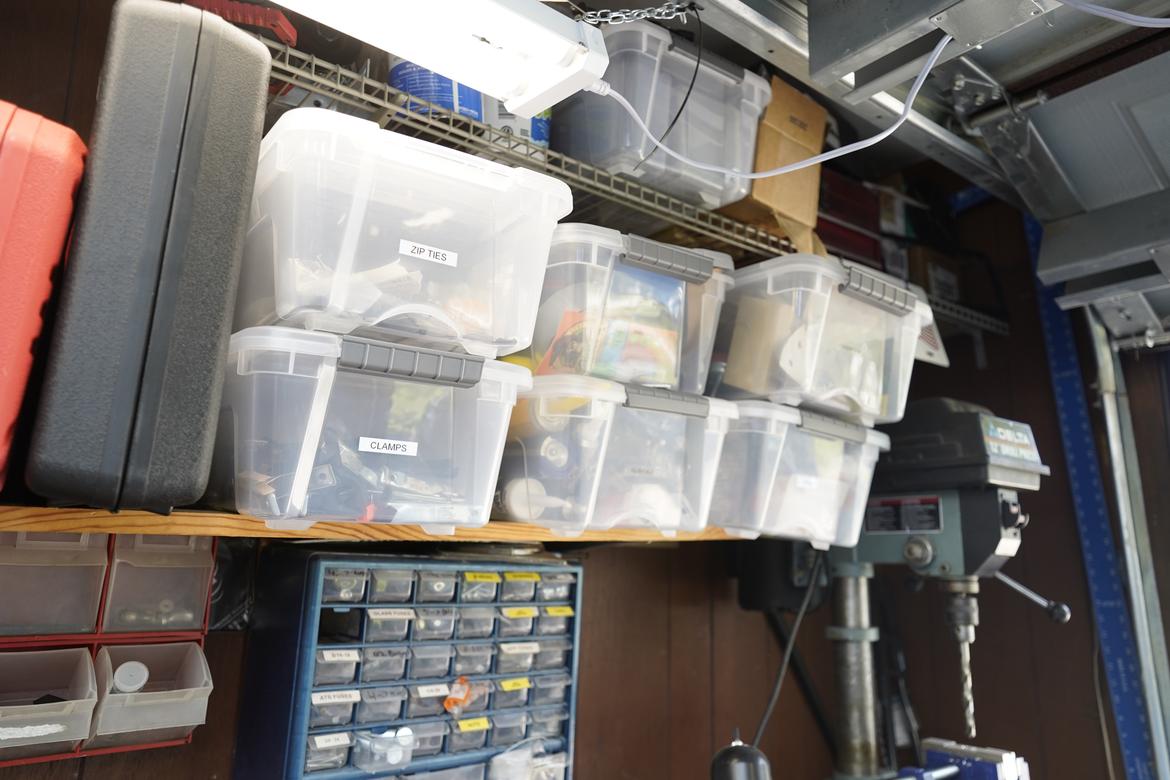
I store these clear bins on wall-mounted shelves above the workbench. Any unused wall space is lost real estate when floor space is limited so be sure to take advantage of it.
Workspace
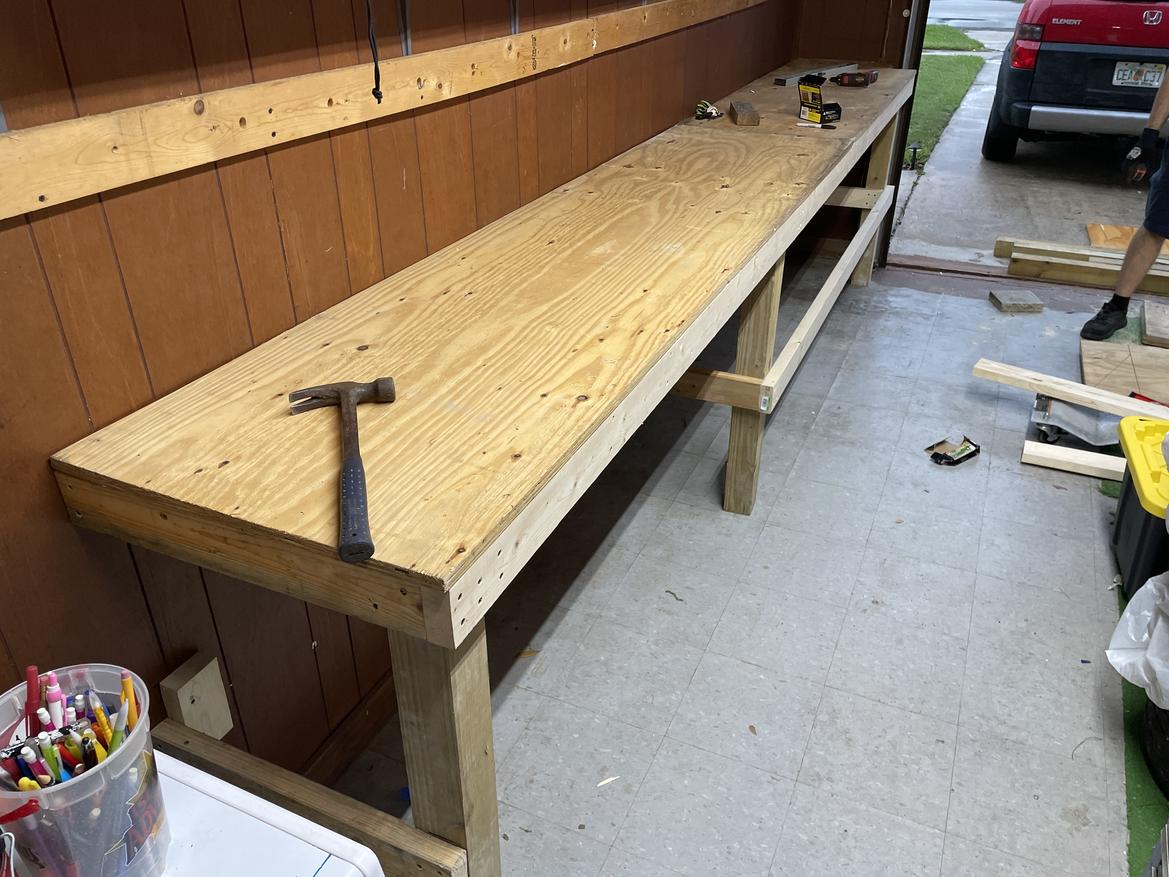
Every garage workshop needs horizontal space for projects, tools and general tinkering. I built a bench along one entire side of the garage not because I had tons of tools to fill it at the time but because I knew I’d need that space eventually.
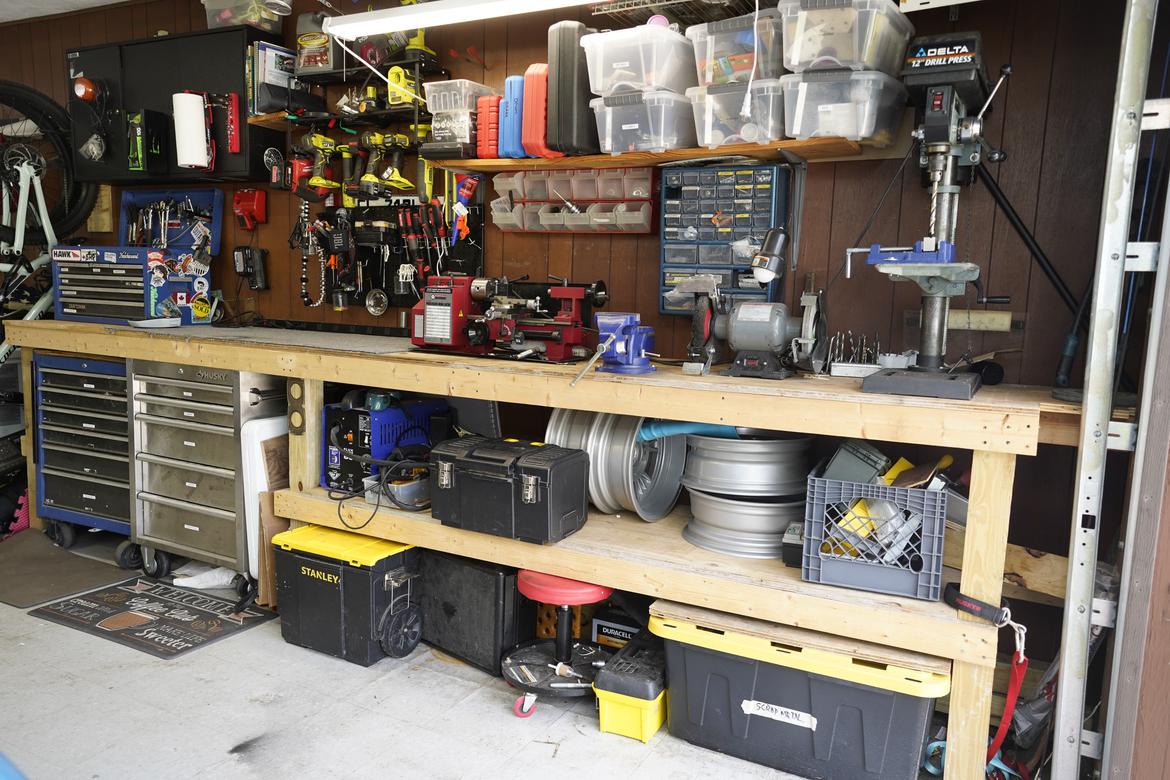
I also used my storage bins as templates when building the shelves, ensuring they’d fit neatly under or near the workbench for easy access.
If a full custom bench isn’t in the cards, there are solid off-the-shelf options from big-box stores. Adjustable benches or rolling toolboxes with wooden tops can give you flexible workspace wherever you need it.
Lighting
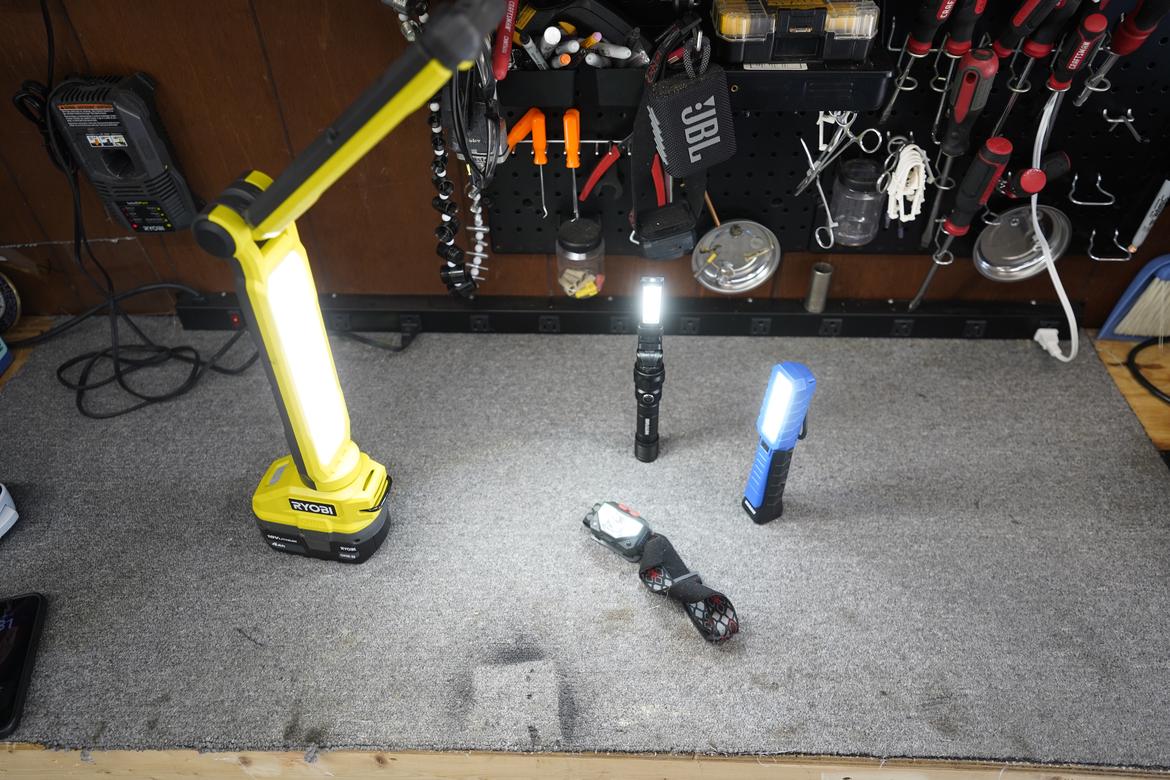
Never underestimate the power of good lighting. That single builder-grade fluorescent fixture won’t cut it but, thankfully, it’s easy to upgrade your lighting on a budget.
The simplest approach might be to pick up some linkable LED shop lights and power them with a standard 110V plug. This avoids the need to mess with your home’s electrical system, which is especially useful if you’re renting.
If you’re able to hardwire new lights, go for more than you think you’ll need–you won’t regret having extra light. LED is the way to go, and fixtures can be found at most big-box stores for under $100 each. You can also save money by retrofitting older fluorescent fixtures with LED bulbs.
Beyond ceiling lights, keep a few headlamps and a battery-powered portable light on hand. I use a Ryobi one that’s been a real game changer for tight spaces.
Labels
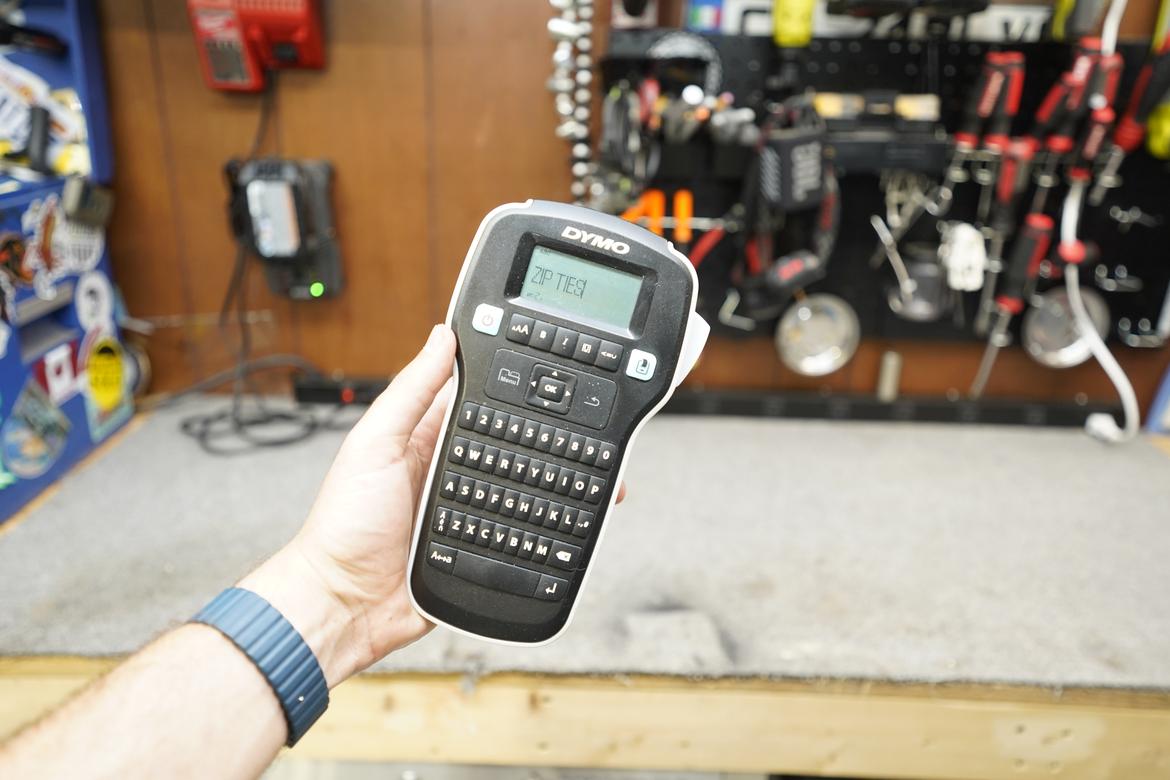
Don’t think twice, go get a label maker if you don’t already own one. Sure, tape and a Sharpie work in a pinch, but will you be able to read your handwriting in six months?
A decent label maker will cost around $30. Just make sure replacement tape is easy to find before choosing a model. I’ve had good luck with the DYMO LabelManager 160 and use a variety of tape colors for different purposes.
Not only is it satisfying to use, but a labeling system also helps everyone–family, friends or whoever’s in the garage–knows where things are and where they go back.
Chemicals
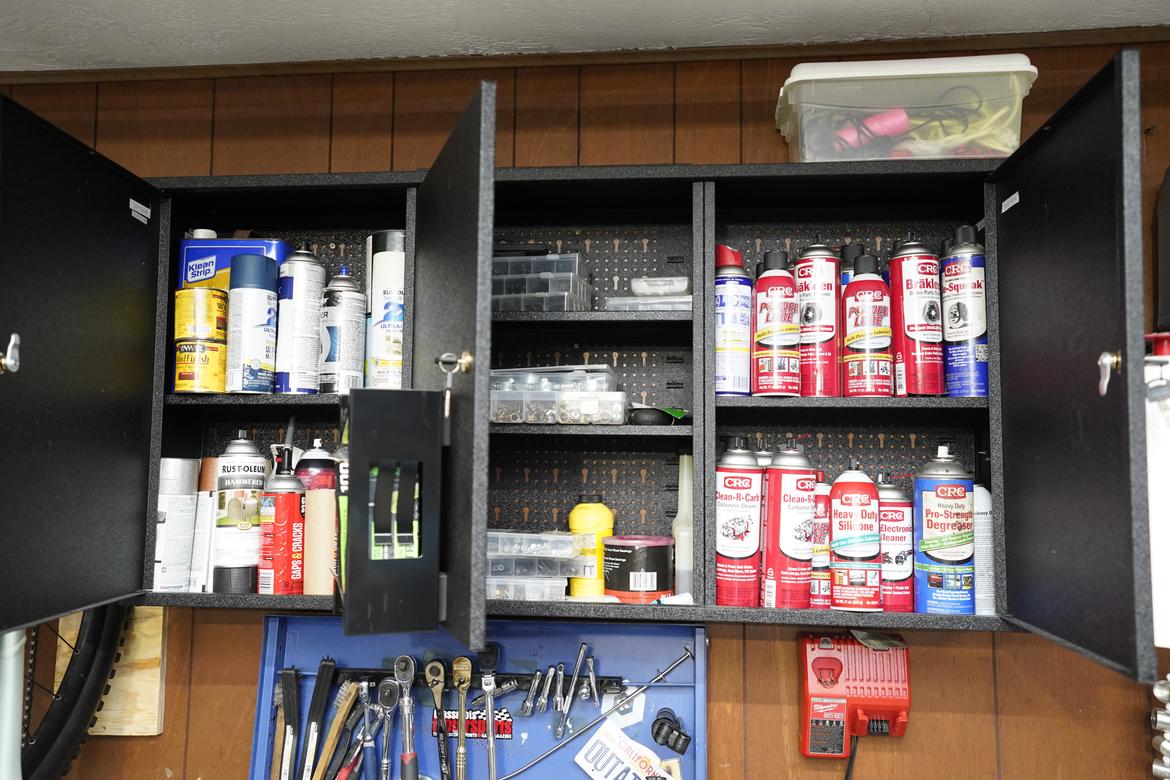
While I love the idea of large, free-standing chemical cabinets, that just wasn’t an option with my limited space. Instead, I picked up a metal wall cabinet from Harbor Freight. It looks good, fits my needs, and still leaves room for future expansion.
Inside, I’ve organized it with a section for spray paint, one for cleaning chemicals, and a middle section for hardware and frequently used odds and ends.
Tools
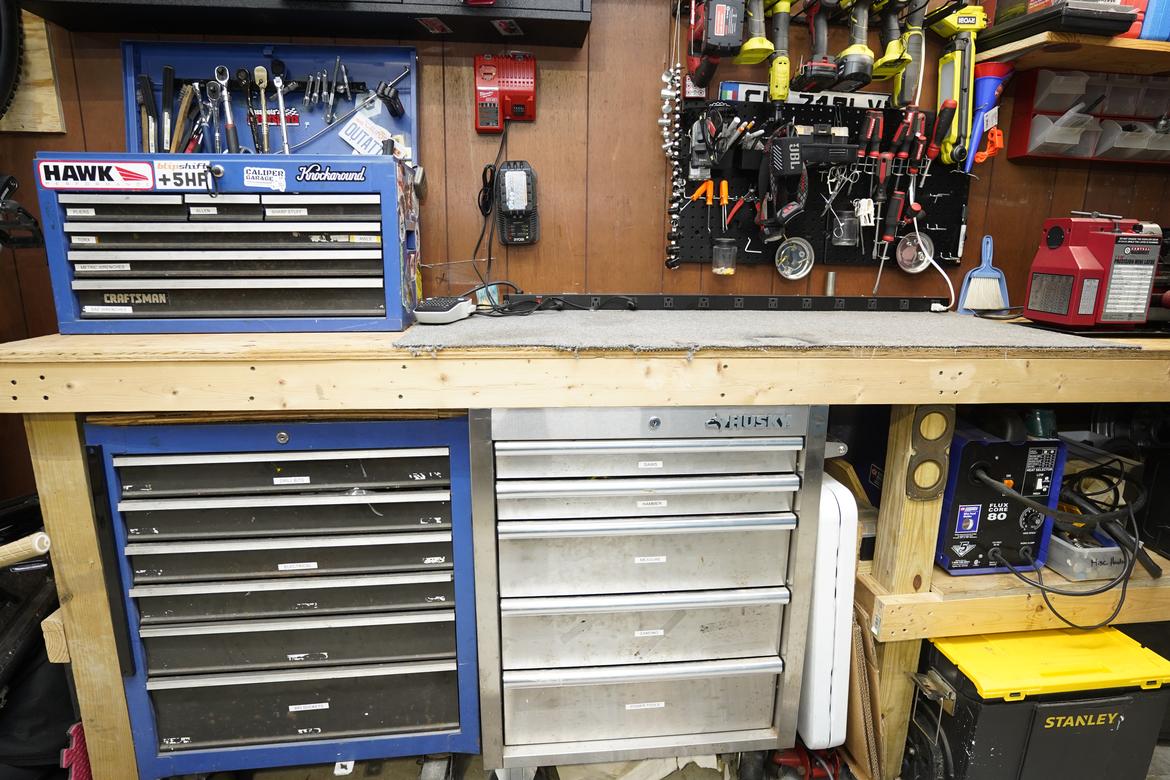
My workbench doubles as my tool bench, so I needed a smart way to store both hand and power tools.
One advantage of the custom bench is that I built it to fit my rolling toolboxes underneath, keeping them out of the way. My top box fits neatly on a corner of the bench for easy access. I also designed the cutout under the bench to fit a larger box in case I upgrade in the future.
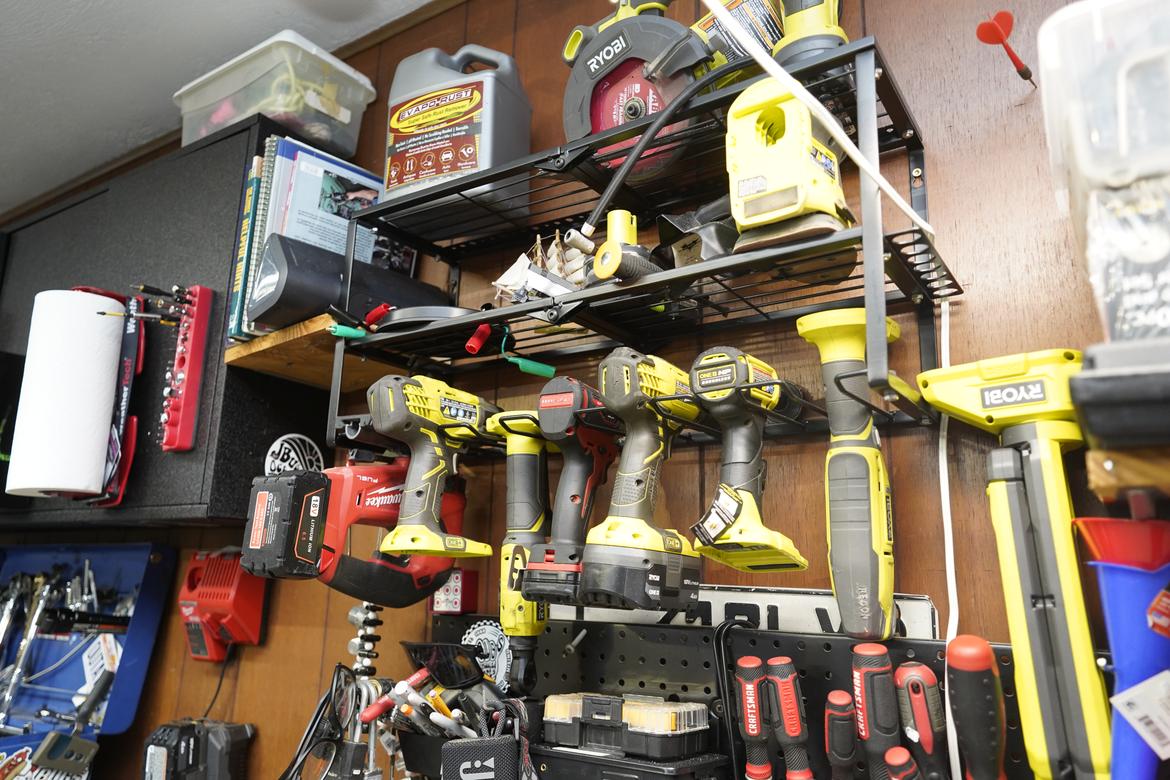
For power tools, I mounted the chargers on the wall and added a budget-friendly, wall-mounted tool organizer that keeps everything within reach. Below that, I installed a pegboard for flexible tool storage, perfect for adapting to changing needs over time.
Get a shed
One final tip, if you don’t already have one, get a shed. An attached garage is not the place to try and do car stuff and keep yard equipment, bikes, beach toys, camping equipment and other non-car related stuff. It doesn’t have to be a big shed, but move the lawnmower to its own space and the stuff you only need occasionally like your bin of scrap metal and those spare wheels you are not ready to sell yet.
With a bit of planning and creativity, even my modest attached garage has become a functional and organized workspace without giving up its role as a family garage. Make every inch count, and don’t be afraid to start small. You’ll be surprised how quickly it all comes together.


